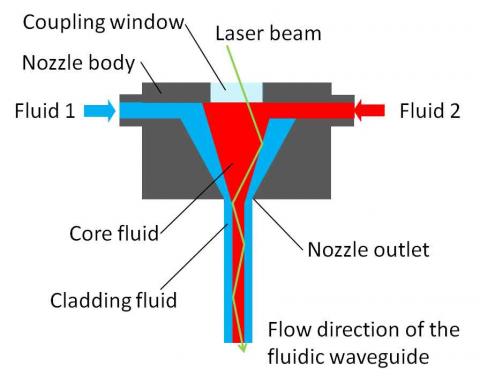28.01.2016
The Laser Zentrum Hannover e.V. (LZH) is working on three subprojects in the new research priority “Hybrid Numerical Optics” of the Hannover Centre for Optical Technologies (HOT) of the Gottfried Wilhelm Leibniz University Hannover. This priority is being supported by the funding initiative „Niedersächsisches Vorab“ with almost one million Euros until the fall of 2018.
In the new competence center for optical simulation, the LZH is working on three subprojects in the areas of high-power glass fiber amplifiers, dielectric coatings and light propagation in fluid columns.
Highest laser powers
In the subproject „Dynamic light propagation in high output glass fiber amplifiers“, the scientists will be working on increasing the laser power of continuous and pulsed systems for the next three years. Presently, the maximum usable output power of high power fiber systems is limited by the so-called transverse mode instability (TMI). Here, the laser beam profile begins to fluctuate above a certain output threshold. With a simulation model, the Laser Development Department at the LZH wants to more closely examine the interactions and processes in the fiber amplifier, and thus better understand TMI. Furthermore, they plan to examine another peak power dependent phenomenon, the effects of Kerr nonlinearity on the pulse propagation in fused fiber couplers.
Improving coatings
In the subproject „Structural and optical properties of dielectric coatings“, the Laser Components Department is combining different simulation techniques in order to optimize coating processes. The scientists want to understand how the coating properties and damage behavior is influenced by the coating parameters. For this purpose, they are combining classical growth models with quantum-mechanical simulation techniques. Thus, they can determine the structural, optical and electronic properties of the coating structures produced.
Liquid-guided laser beam
In the subproject „Simulation of the light-guiding properties in coaxially flowing fluid pairs using wave-optical light propagation in fluid-dynamically and thermally superimposed refractive index distributions”, the beam guidance in flowing liquids will be simulated. The scientists in the Production and Systems Department want to predict light propagation in fluid or gaseous light waveguides using a hybrid approach. In order to do so, they will simulate a flowing liquid column using a two-fluid system. They will also investigate the propagation of light in this liquid column. Connecting both methods is the main goal of this subproject. A liquid-guided laser beam can be used, for example, for laser materials processing.













